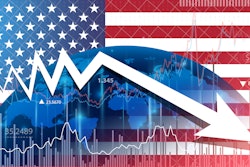
The Conference Board Leading Economic Index (LEI) for the United States declined by 0.7% in June to 106.1 (2016=100), following a decline of 0.6% in May. The LEI is down 4.2% over the six-month period between December 2022 and June 2023—a steeper rate of decline than its 3.8% contraction over the previous six months (June to December 2022).
“The U.S. LEI fell again in June, fueled by gloomier consumer expectations, weaker new orders, an increased number of initial claims for unemployment and a reduction in housing construction,” says Justyna Zabinska-La Monica, senior manager, Business Cycle Indicators, at The Conference Board. “The Leading Index has been in decline for 15 months—the longest streak of consecutive decreases since 2007-08, during the runup to the Great Recession. Taken together, June’s data suggests economic activity will continue to decelerate in the months ahead. We forecast that the U.S. economy is likely to be in recession from Q3 2023 to Q1 2024. Elevated prices, tighter monetary policy, harder-to-get credit and reduced government spending are poised to dampen economic growth further.”
- The Conference Board Coincident Economic Index (CEI) for the United States remained unchanged in June at 110 (2016=100), after rising by 0.2% in May. The CEI is now up 0.6% over the six-month period between December 2022 and June 2023—down from the 1.1% growth it recorded over the previous six months. The CEI’s component indicators—payroll employment, personal income less transfer payments, manufacturing trade and sales and industrial production—are included among the data used to determine recessions in the United States.
- For the past two months, industrial production has contributed negatively to the coincident index, offsetting gains from employment, sales, and income growth components.
- The Conference Board Lagging Economic Index (LAG) for the United States was also unchanged in June 2023, at 118.4 (2016 = 100), after improving 0.1% in May. The LAG is up slightly by 0.1% over the six-month period from December 2022 to June 2023, down dramatically from its 3% growth over the previous six months.
















